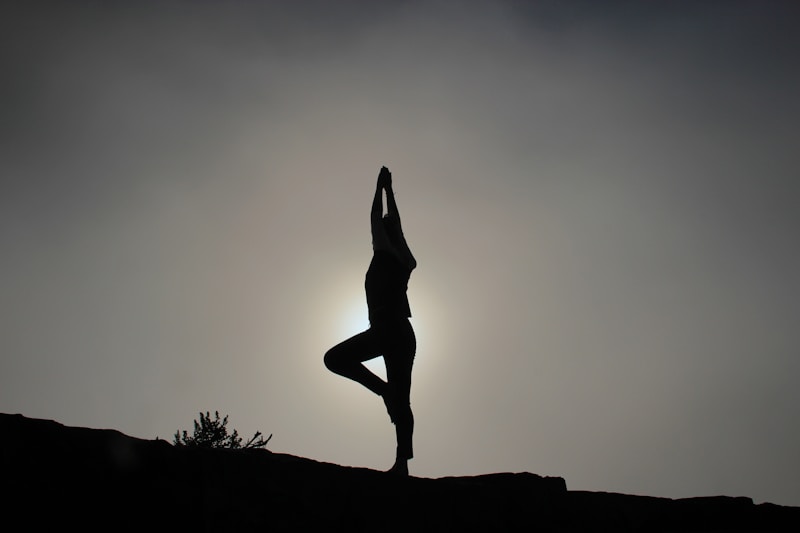If you’re reading this because you’ve just had a baby – congratulations! And if you haven’t heard it yet, you and your body will never be the same again.
Your body has achieved the miraculous; it has conceived, grown, protected, fed and then delivered a brand new human into the world. As a sideline, it has grown an organ from scratch (the placenta), pumped 50% more blood round the body, and developed a super-sense of smell, among other things.
But, this nine-month Herculean task of growing and giving birth to a baby wreaks havoc on the female form. Permanent effects of pregnancy on the body can be: bigger feet, bigger all around, a permanently wider vagina, weaker bladder muscles, receding gums, breast sagging, stretch marks and more. But, after that delightful list, we’re here to tell you that this doesn’t have to be a bad thing!
There’s a way to reclaim your new body, to get to know it, love it and feel stronger and more fabulous than ever. And that way is – postnatal yoga.
The Pressure to Look Perfect
The message that new mothers receive loud and clear from society and photos of celebrities is that anything less than pinging, like a pert elastic band, back into your pre-pregnancy jeans after a couple of weeks is a FAILURE.
The Duchess of Sussex, Meghan, has been perhaps the one exception to the rule, turning up to Wimbledon looking stylish, healthy, and as if she’d had a baby a few weeks before, which she had. Apparently she wants to buck the expectation that if you’re in the public eye your post-baby body should be tiny. Hoorah!
According to a ‘source‘, Meghan’s only form of exercise at the moment is gentle yoga and meditation. Another source claimed that Meghan was also taking walks around Windsor Great Park and – shock horror – enjoying this time with her new baby. Pippa Middleton is another new mother who credits mother and baby yoga as an essential part of her post-baby exercise plan, and apparently her son Arthur is as big a fan as she is.
You’ve Just Had a Baby!
This leads on to the all-important fact that in the first few months after having a baby, rather than rushing to lose weight and exercise, top of most people’s lists is actually being with your baby. It took me almost three years to return to any form of exercise after having my children, as I had other priorities, such as bringing up two small children, and learning how to make this massive life-balance adjustment.
Postnatal exercise should initially be a way to remember that you have a body in the first place, that isn’t just pain, leaking boobs, and exhaustion. In his book Iyengar Yoga for Motherhood, B K S Iyengar says:
After delivery, women often forget to take care of themselves. The enthusiasm they felt for protecting themselves and the baby during pregnancy tends to fade in the postnatal stage.
And for ‘tends to fade’, read, ‘disappears off over the horizon’. Unless you’re lucky enough to have staff, most new mothers barely have time to go to the toilet, let alone roll out the mat for an hour of yoga.
What the Experts Say
According to pretty much every expert out there it’s important not to rush into doing too much, too soon.
The technical reason is that after birth there is a period of time called ‘involution’ when the uterus lowers to its original position in the pelvic cavity, which breastfeeding mothers can sometimes feel happening in the early days – it’s a feeling not dissimilar to labour itself. After the uterus contracts and moves down, the other internal organs, which have been crowded and squashed, can gradually return to their pre-pregnancy positions.
The yoga teacher and wellness poster-girl, Madeleine Shaw, stresses that you shouldn’t do any yoga at all until at least six weeks post-partum. And mothers who have had a C-section need to around eight weeks for their deep abdominal wounds to heal.
But after that, it’s important to find a way to get some regular, gentle exercise back into your life.
Where Postnatal Yoga comes in
Postnatal yoga is a bridge between your body before and after having a baby. It should allow space for the new mother to return to herself, and to gradually build her body back to full strength, in a safe and gradual way. The yoga teacher should firstly make sure that the student isn’t rushing back to yoga when their body isn’t ready. Although the recommended time is six-eight weeks, they should be signed off by their GP, and also, have the energy to come back to class.
The postnatal class should be a gentle re-introduction to yoga, with plenty of variations offered for those that need it.
It’s also worth remembering that yoga isn’t just the asanas. Before coming back to a class, the new mother can spend time at home practicing pranayama. Ujjayi 1 and 2 (warrior breath) will very gently tone the abdominal and pelvic muscles, as well as relaxing and calming the mind. Iyengar also says that it ‘purifies the breast milk’ – an added bonus for baby. Supported reclining poses, such as Supta Baddha Konasana, are also safe to practice after a few weeks, and will encourage the new mother to rest, which she won’t need much encouragement to do!
Yoga is the one form of exercise that allows the mother to really rest – she won’t be getting much sleep, so an extra-long savasana will be just what the doctor ordered. It also teaches her patience – it took nine months to have the baby and folk wisdom says it will take another nine months after birth to get back to ‘normal’.
Postnatal yoga also encourages the mother to put yoga and herself somewhere on the list from the very beginning of her child’s life – it sets her priorities from the beginning. And then down the line, your own children can teach you much much more about yoga…












